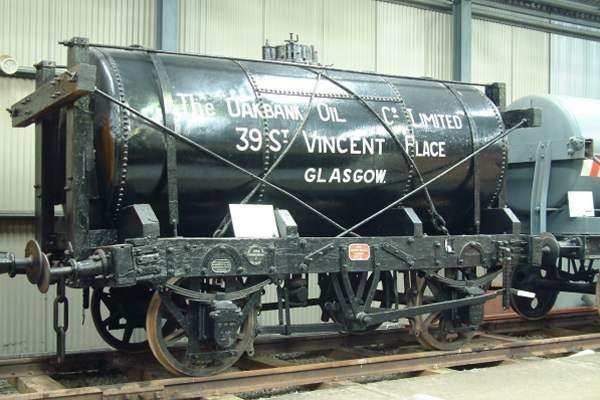


The Scottish oil industry started not with the North Sea in the 1960s, but in the late 1850s with the exploitation of rich deposits of West Lothian oil shale, which was mined and then heated in retorts to release the oil. The process was developed by James "Paraffin" Young, who had previously patented the method of "cracking" oil, and continued in significant production until the Second World War at a rate of up to 3 million tons of oil shale per year. Reduced production commenced in 1946 and continued until 1961. The oil was refined at Pumpherston Oil Works, which produced a full range of refined products from petrol ("Scotch") to naphtha, fuel oil, lubricating oil, and paraffin wax.
This is a recognisably-modern tank wagon with a cylindrical tank probably built to carry paraffin. It has a wooden frame, and is in almost original condition. As late as 1962, a significant amount of oil traffic was still being carried in veterans like this, mainly by slow, local freight trains. All such wagons were withdrawn when British Railways negotiated new contracts with the oil companies, giving them the incentive to run modern wagons in trainloads.
The Scottish Shale Oil Industry, from The Wonders of World Engineering, London 1933, reprinted 1992 by the Almond Valley Heritage Trust .
History of the oil shale industry Wikipedia .
